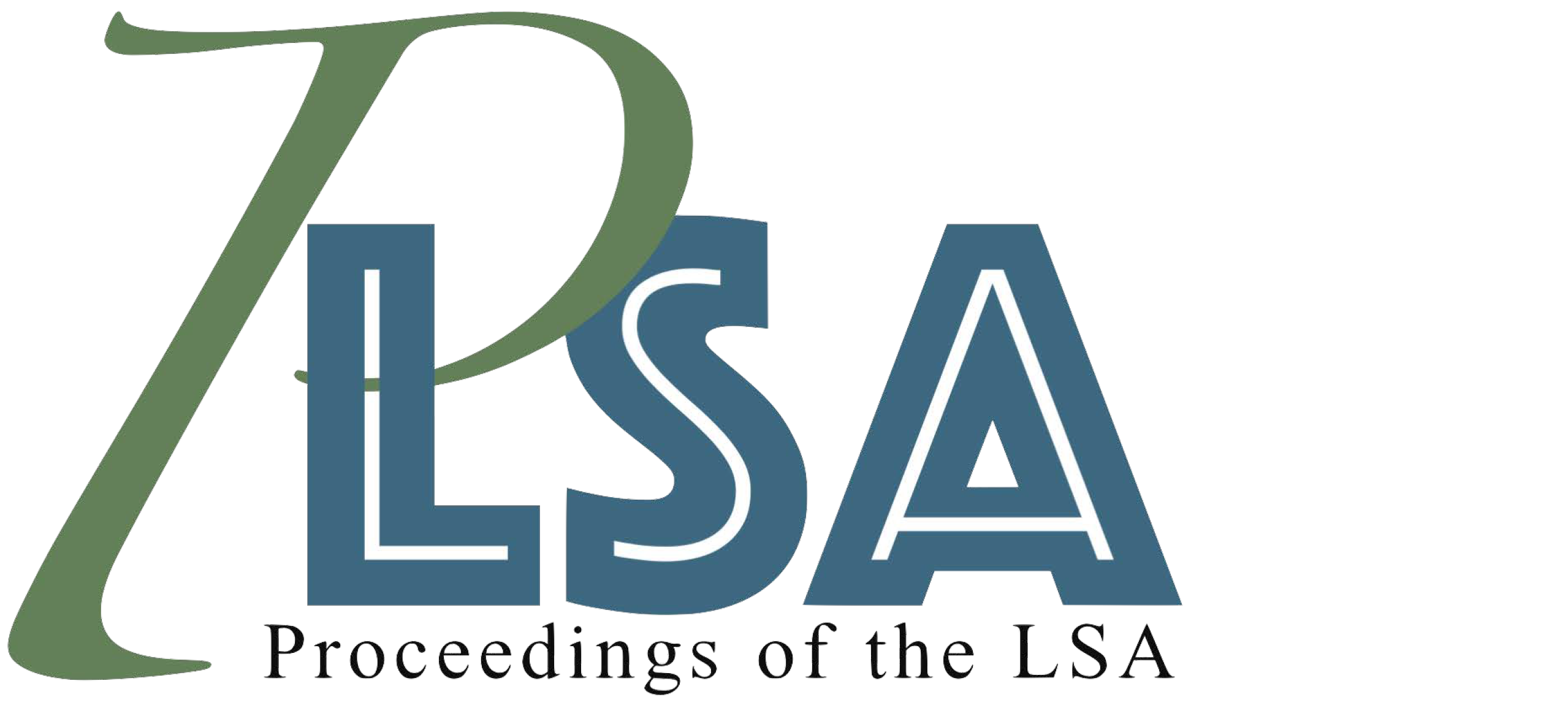Children's use of prosody and word order to indicate information status in English noun phrase conjuncts
DOI:
https://doi.org/10.3765/plsa.v3i1.4331Keywords:
information structure, prosody, word order, English, language acquisitionAbstract
Our study investigates the influence of information status on word order and prosody in children and adults. Using an elicited production task, we examine the ordering and intonation of noun phrases in phrasal conjuncts in 3-5-year-old and adult speakers of English. Findings show that English-speaking children are less likely to employ the "old-before-new" order than adults and are also not adult-like in using prosody to mark information status. Our study suggests that even though intonation and word order are linguistic devices that are acquired early, their use to mark information status is still developing at age four.Downloads
Published
2018-03-03
Issue
Section
Articles
License
Published by the LSA with permission of the author(s) under a CC BY 4.0 license.
How to Cite
de Ruiter, Laura, Bhuvana Narasimhan, Jidong Chen, and Jonah Lack. 2018. “Children’s Use of Prosody and Word Order to Indicate Information Status in English Noun Phrase Conjuncts”. Proceedings of the Linguistic Society of America 3 (1): 40:1–9. https://doi.org/10.3765/plsa.v3i1.4331.
